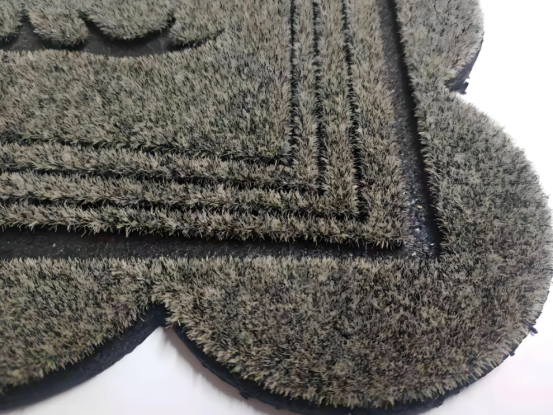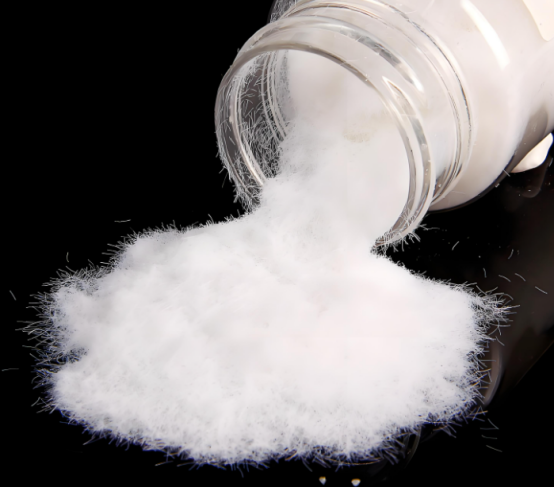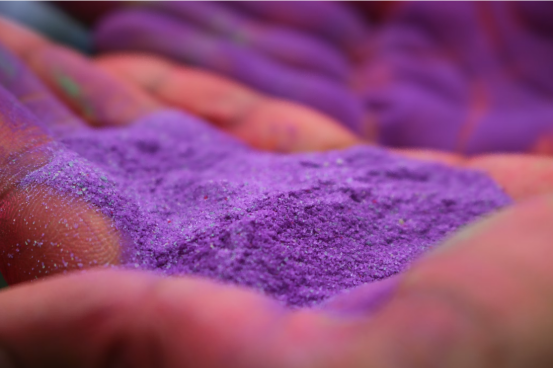Introduction:
This article explains the importance of selecting the right denier for flocking powder, a key factor that impacts texture, adhesion, and overall performance. By understanding how denier (fiber thickness) influences the final results, users can avoid costly mistakes and material waste. It provides clear guidance for choosing the right denier for different applications, including nylon, polyester, and microfiber flocking powder, helping designers, buyers, and manufacturers achieve high-quality, durable, and visually appealing flocked surfaces efficiently.
1.What is Denier (D) and Why It's Critical?
Denier is the standard unit used to measure the thickness of fibers. It's defined as the mass in grams of 9,000 meters of the fiber. The denier of a fiber directly influences the look and feel of the finished product.
Low denier (1–2D): Fine, delicate fibers, ideal for materials that require a soft and smooth finish like gift boxes, printed materials, and premium packaging.
High denier (6–15D): Coarser, thicker fibers that are more durable, perfect for heavy-duty applications like footwear, automotive interiors, and furniture.
Example:
1.5D fibers feel like silk and are used for soft surfaces like luxury packaging and cosmetic box interiors.30D fibers are much thicker and more robust, often used for industrial applications like floor mats and heavy-duty textiles.
2.Denier-Based Selection Chart – Choose by Application & Material
|
Denier Range |
Recommended Materials |
Application |
Recommended Fiber Length |
Reason |
|
0.5–1D |
Nylon, Rayon, Microfiber |
Christmas tree flocking powder, gift cards, jewelry boxes |
0.3–0.8mm |
Extremely fine texture, even coverage for precision designs. |
|
1.5–2D |
Nylon, Glitter Flock, Dyed Rayon |
High-end gift boxes, cosmetic liners, custom labels |
0.4–1mm |
Velvet-like finish, even color and excellent durability. |
|
2–6D |
Nylon, Polyester, Blended Fibers |
Footwear lining, printed fabric, PVC materials |
0.6–1.5mm |
Good resilience, ideal for designs and patterns. |
|
6–12D |
Polyester, Nylon |
Wall coverings, home decor, toys |
1.5–3mm |
Fuller texture, strong coverage, and dimensional effect. |
|
12–30D |
Polyester, Heavy Nylon |
Industrial packaging, audio fabric, large display art |
2–4mm |
Strong adhesion, resistant to deformation, and aging. |
|
30–100D |
Custom Polyester, Long Filaments |
Exhibition installations, 3D large pieces, model structures |
4–20mm |
Provides substantial volume, requires high-voltage electrostatic field. |
3. Choosing Denier by Function: Softness, Coverage, or Durability?

For a soft, silky feel: Choose 1.5–2D nylon flocking powder or rayon flock for applications like gift packaging and luxury stationery.
For added visual depth and coverage: Opt for 6–12D polyester for wall fabric, home decor, or floor mats to create rich, plush textures.
For high durability and wear resistance: For applications like footwear or automotive interiors, select 8–30D nylon or polyester flocking powder for optimal performance under frequent use.
4.Equipment and Adhesive Matching by Denier
To achieve the best results, it's essential to match your denier with compatible flocking equipment and adhesives. The right flocking adhesive ensures a strong bond, while the flcoking machine needs to provide the right amount of electrostatic power for proper fiber alignment.
|
Denier Range |
Recommended Equipment |
Recommended Adhesive |
Reason |
|
0.5–2D |
JF2000, SF1500 |
ZS-810, ZS-750 |
Light electrostatic process, suitable for paper-based substrates. |
|
2–6D |
JF2000, SF2500 |
ZS-800, ZS-830 |
General medium pressure equipment, suitable for printing and fabric. |
|
6–15D |
JF3000, SF2500 |
ZS-828, ZS-622 |
High-power equipment needed for coarse fibers, stronger adhesive. |
|
30–100D |
JF3000 High-Voltage Version |
Custom Dual-Component Adhesive |
Coarse fibers require high-voltage electrostatic field and strong adhesion. |
5.Common Mistakes in Denier Selection
Mixing Widely Different Denier Fibers in the Same Workflow
Using fibers with large differences in denier can lead to uneven texture and poor adhesion. Always select fibers within a similar denier range for consistency.
Selecting Denier Without Considering Electrostatic Verticality
Each denier requires different electrostatic settings for proper fiber standing. Neglecting voltage settings can result in fibers not standing upright, leading to poor adhesion.
Ignoring Dyeing Effects When Choosing Denier
Higher denier fibers often require more dye to achieve consistent color. Ensure compatibility between denier and the dyeing process to avoid color inconsistencies.

6.Conclusion
Denier is the key factor in selecting the right flocking powder. Whether you need a soft finish for premium packaging or durable texture for automotive interiors, choosing the right denier ensures optimal results. By understanding the relationship between denier, fiber length, and application, you can streamline your design process and avoid costly mistakes.
7. FAQs
1. What is the best denier for nylon flocking powder used in packaging?
For packaging, 1.5–2D fibers create a luxurious, smooth texture ideal for high-end packaging materials.
2. Can I use 10D fibers for fabric applications?
10D fibers are better suited for heavier applications like automotive interiors. For fabrics, 2–6D fibers are more appropriate for a flexible, durable finish.
3. How do I test different denier options before bulk ordering?
We offer sample testing to help you test different denier options and find the best match for your needs.
4. Does denier affect glue consumption?
Yes, higher denier fibers require more adhesive for proper bonding.
5. Can Zhang’s Flocking customize mixed denier powders for multi-layer effects?
Yes, we can provide custom denier powder (https://www.zhangsflock.com/about.html)combinations to achieve multi-layered flocking effects.
How Zhang’s Flocking Supports You
✅ Custom Flocking Powder in 0.5D–100D
✅ Free sample testing and flocking adhesive/ equipment recommendations
✅ 25 years of industry experience serving top brands like Nike, Adidas, and H&M
✅ One-stop denier selection, material matching, and equipment setup support









